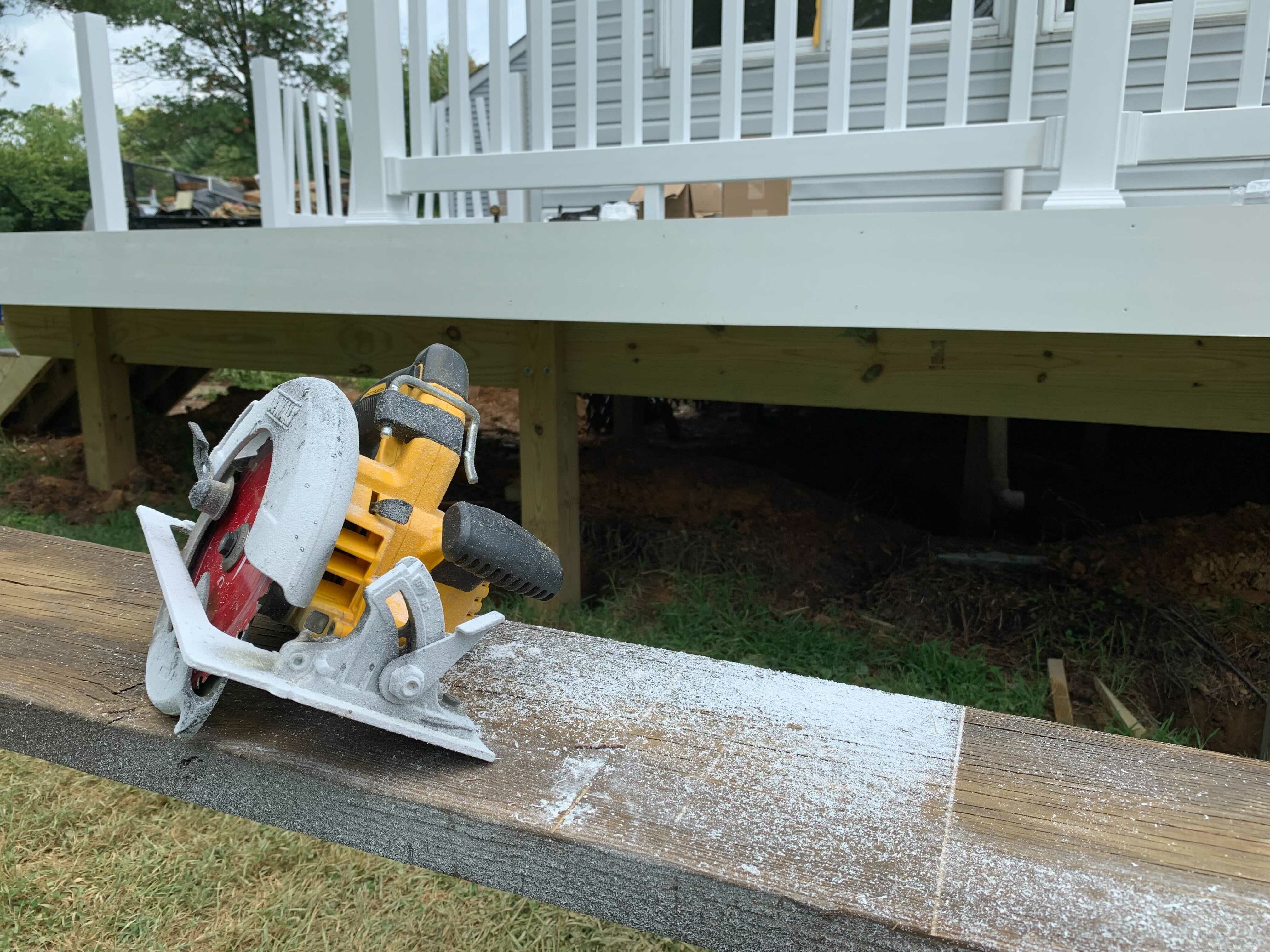
In less than a month, Montgomery County, Maryland, saw two home deck collapses that sent people to the hospital. The incidents are a reminder that homeowners need to monitor their decks closely, and one deck builder said you should start by looking where the deck connects to the house.
“Most of these collapses usually happen when there is no back beam against the house,” said Jose Ugalde, with Deck Master, in Gaithersburg.
Ugalde said it is not uncommon to find decks more than 10 years old that are using the house for support and cannot stand freely on their own. In Montgomery County, that is no longer allowed; newer decks must be supported by a new beam and supports placed a couple feet from the wall of the house.
“It’s actually supporting the whole structure without putting stress on the house,” Ugalde said.
In some cases, Ugalde said, the new support structure can be added without rebuilding the entire deck.
For Aaron Adams, of Derwood, Maryland, Ugalde’s team needed to add the additional support to his deck, since it was attached to the house. Adams said he knew he needed to have the deck worked on after he noticed it sloped upward and that a support underneath it had become unattached.
“We’d like to have some people over, some friends, and you don’t want to have a surprise visit to the hospital,” Adams said.
Another sign that something is amiss: support posts sinking or showing signs of rotting. According to Ugalde, big cracks in wood can also be a red flag, though he adds that it’s natural for pressure-treated wood to contain smaller cracks.
Also, any movement of the handrails or deck itself when you are on it would warrant having a professional check it out.
Ugalde said there are ways to extend the life of your deck; one way is to make sure water doesn’t gather around the support beams.
“If water is kind of puddling or pooling around the post, that’s not a good sign; that means the post is going to rot, and eventually it could start sinking,” Ugalde said.
If you have a wood deck, he said, don’t let it go too long without resealing or re-staining, because that helps protect it from the sun.
“Most of the damage comes from the sun, from UV rays heating on the deck. It causes discoloration; it causes the grain effect,” Ugalde said.
With wooden decks, the darker the stain the better. Homeowners who just use a clear sealer will need to add more coats, more often.
Ugalde recommends applying transparent sealers every two years, semi-transparent versions every three years and solid colored stains every four years.
Ugalde also said most decks only last about 10 to 15 years, since the quality of wood has changed over the years. He added that age doesn’t really matter, because a deck’s environment, placement and other factors can lead to some lasting longer than others.
“I’ve seen decks that are five years old that look worse than decks that are fifteen years old,” Ugalde said.
For those who want a longer-lasting deck and don’t want the frequent maintenance, Ugalde said, composite decking — an alternative to wood — may be the way to go.








